Category Archives: USACE BAA 2023-2025
Posters: EWC Symposium 2025
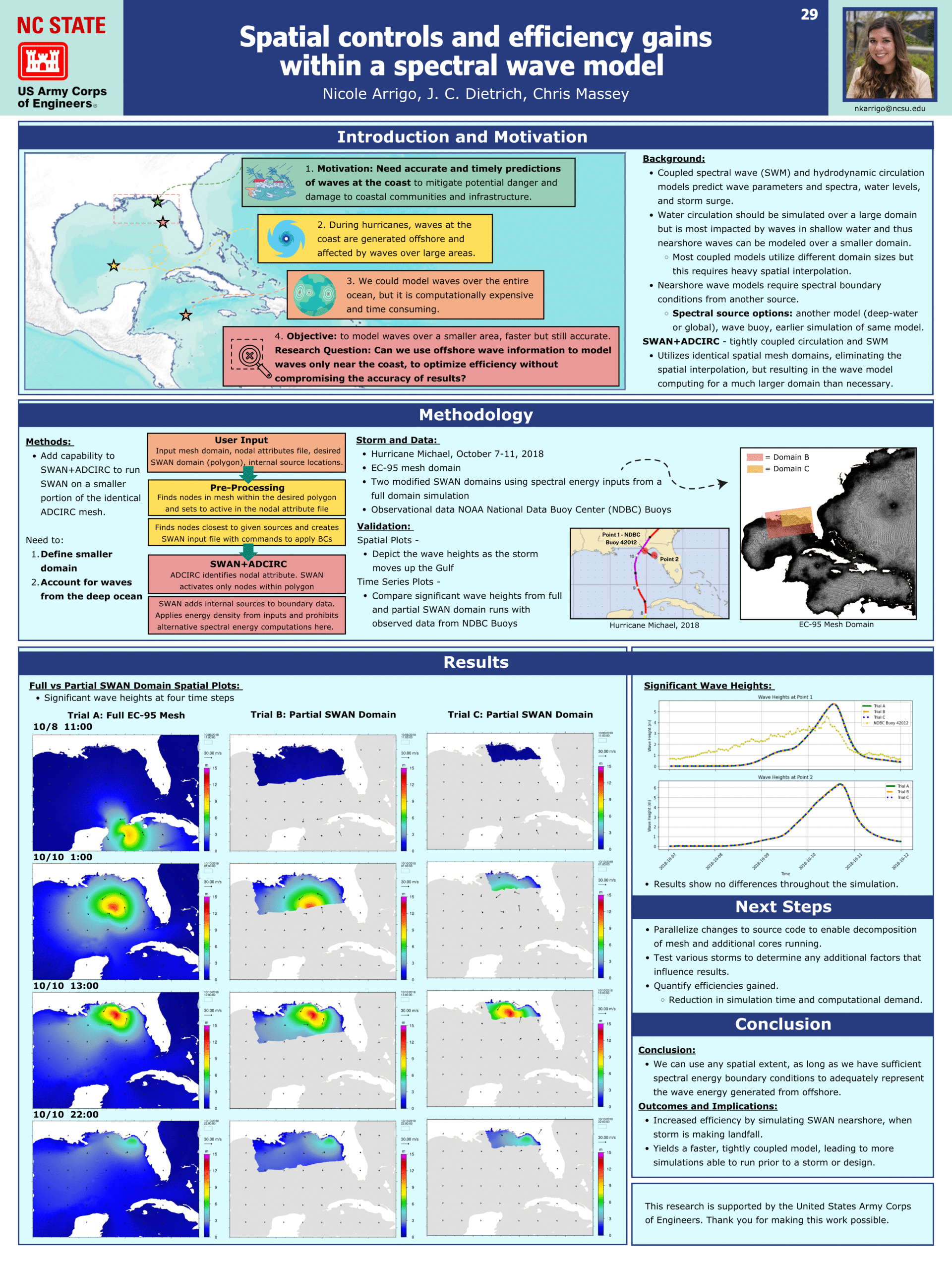
Spatial controls and efficiency gains within a spectral wave model.
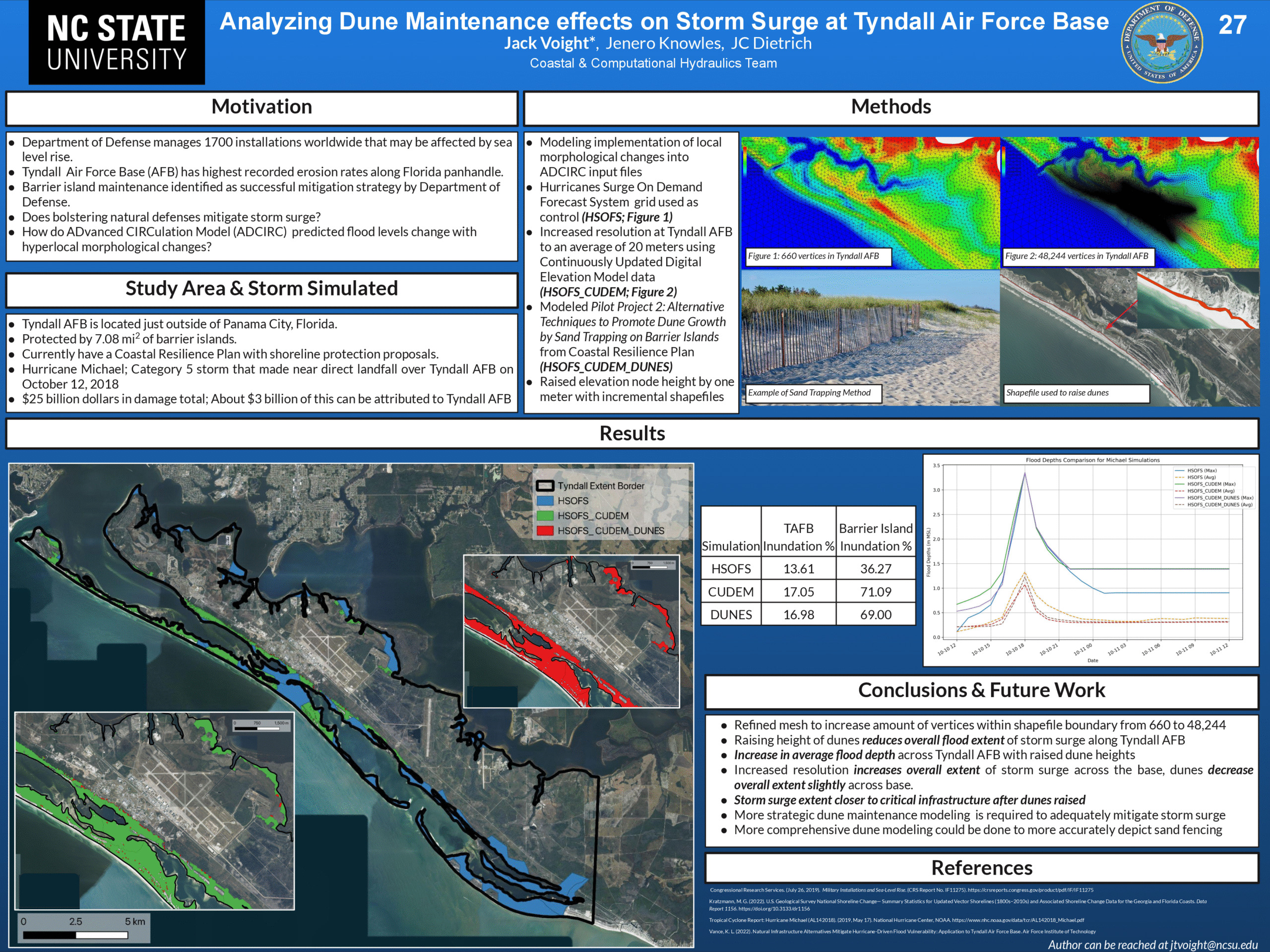
Analyzing Dune Maintenance effects on Storm Surge at Tyndall Air Force Base.
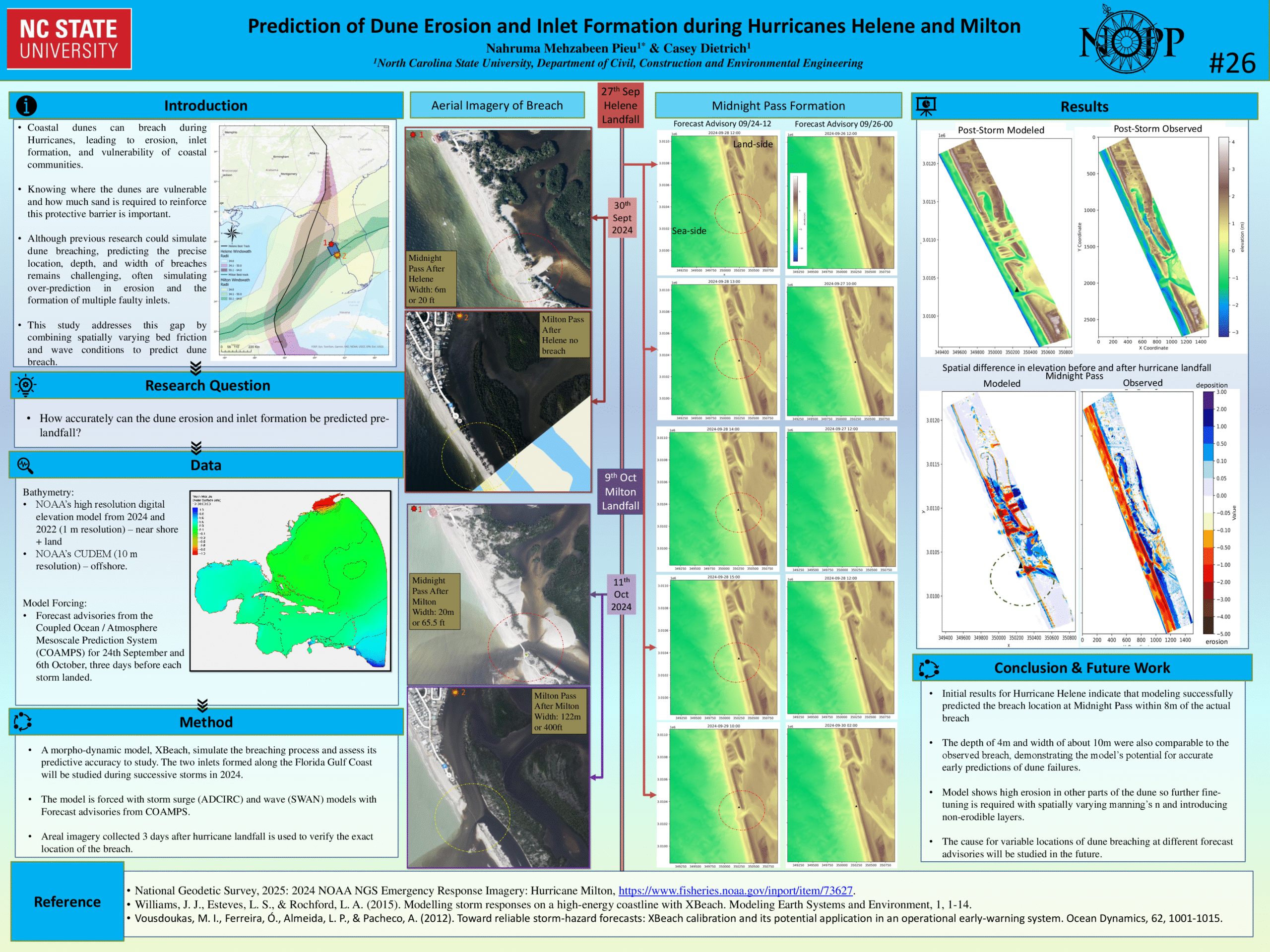
Prediction of Dune Erosion and Inlet Formation during Hurricanes Helene and Milton.
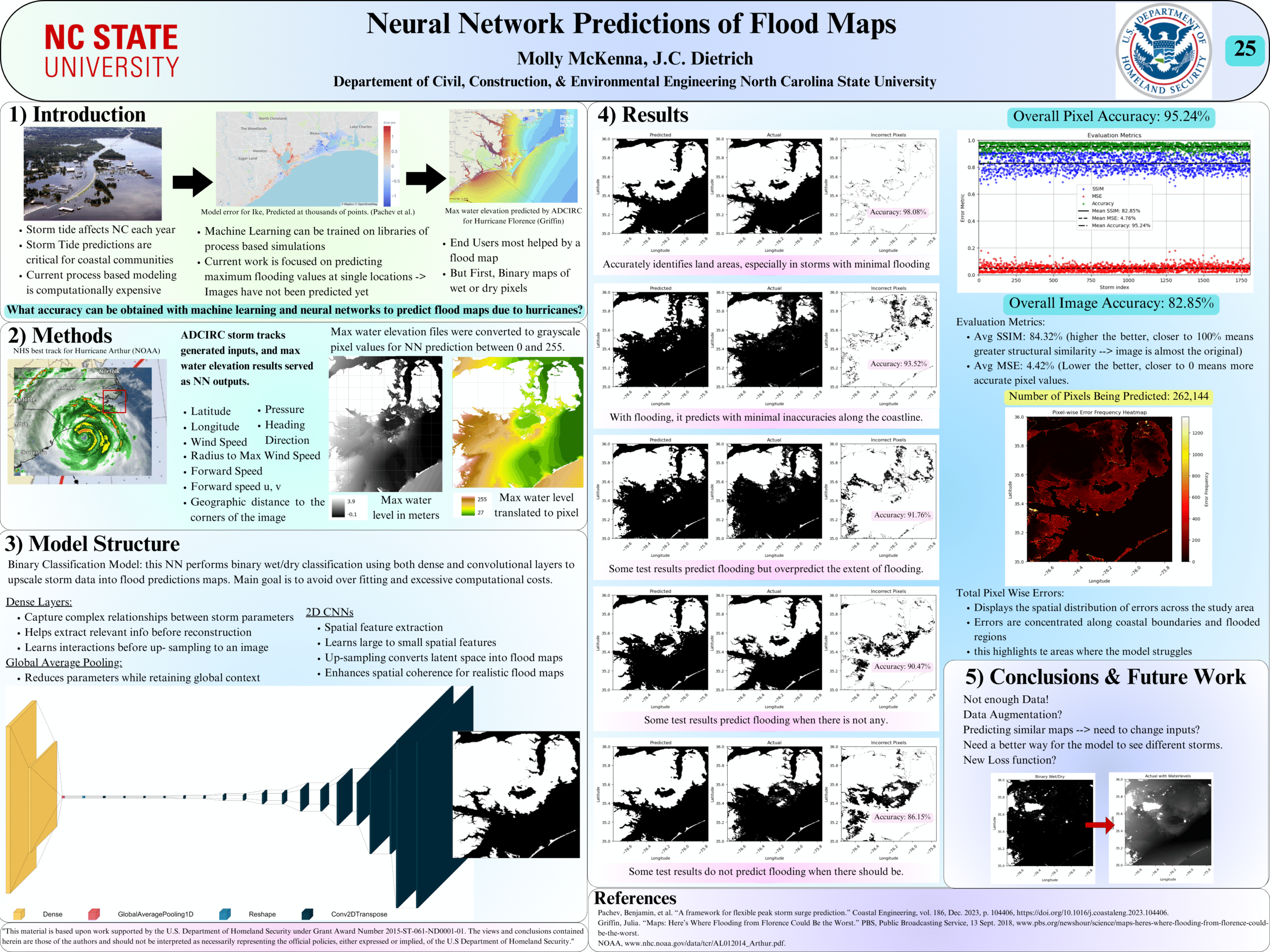
Neural Network Predictions of Flood Maps
Posters: Summer 2024 Conferences
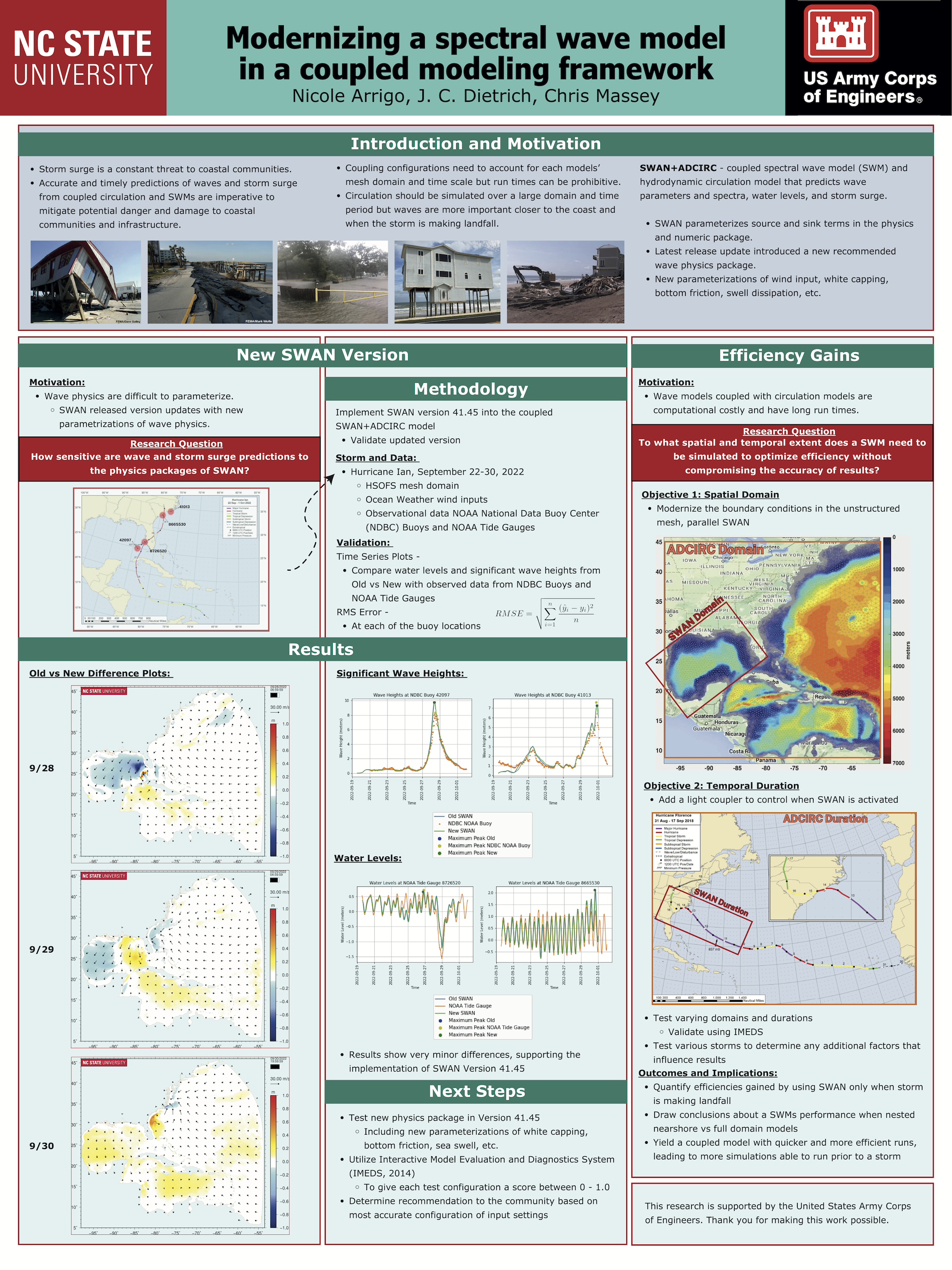
Modernizing a Spectral Wave Model in a Coupled Modeling Framework
Efficiency Gains for Spectral Wave Models in Coupled Frameworks
Thus, there are remaining research questions related to how to improve the performance of a spectral wave model in a coupled modeling framework. What are the tradeoffs when a spectral wave model is nested nearshore and receives boundary conditions from other sources? Over what period should the spectral wave model simulate as a storm approaches a coast? Can this research lead to guidance or best practices for coupled modeling applications? This project will focus on the Simulating WAves Nearshore (SWAN) model and SWAN+ADCIRC framework, but the project findings will be transferable to other spectral wave models and frameworks. We aim to improve the ability to nest spectral wave models in both space and time, via modernization of boundary conditions and a coupled model controller, and thus improve computational efficiency.
JC Dietrich. “Efficiency gains for spectral wave models in coupled frameworks.” Department of Defense, Broad Agency Announcement, Engineer Research and Development Center, Coastal Hydraulics Laboratory, 2023/09/22 to 2025/09/21, $191,353 (Dietrich: $191,353).

